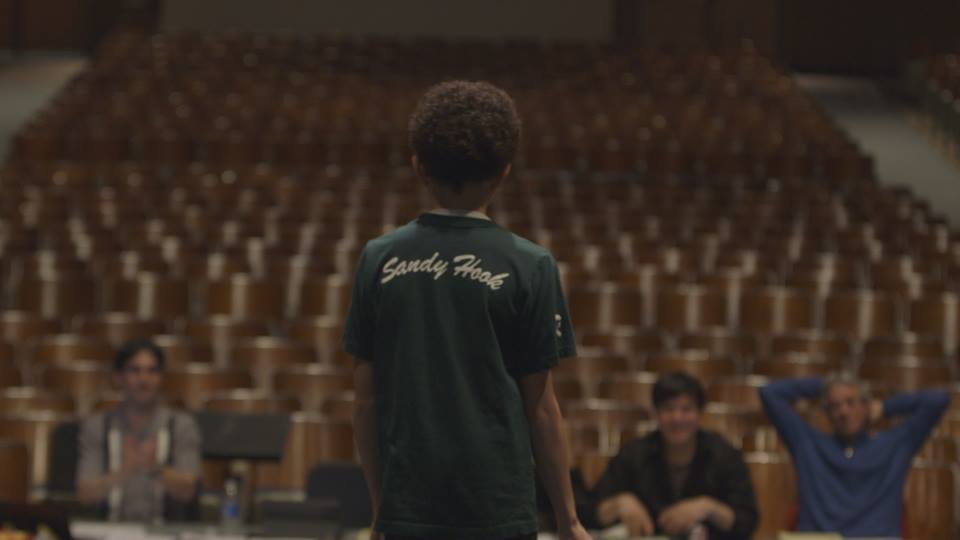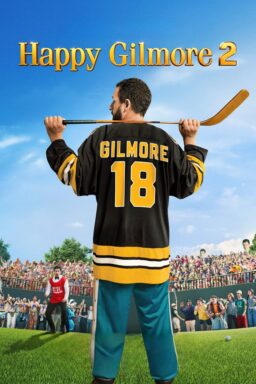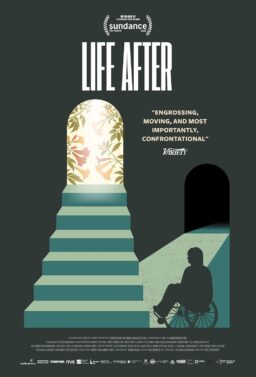Filmmaker Lloyd Kramer was in Newtown, Connecticut, planning a documentary about the shattered community in the aftermath of 2012’s Sandy Hook school shooting, which took the lives of 20 first-graders and six adults. He heard that a team of artists from New York (a director, composer, production designer, choreographer, a couple of professional actors) were traveling to Newtown to put on a musical adaptation of Shakespeare’s “Midsummer Night’s Dream,” cast mostly with kids from the Sandy Hook school system, many of whom had never been in a play before. Kramer realized the potential in such a story, and the end result is “Midsummer in Newtown,” a documentary about the audition and rehearsal process taking place in a town that has barely gotten its bearings yet. The film focuses lovingly on “process”: the kids trying to get their heads around Shakespeare’s language, learning the songs and dances, rising to the challenges, being brave. Most of them were in the school that horrible day in 2012. Many lost a brother, a sister, a friend. They have been traumatized. “Midsummer in Newtown” knows that it should not manipulate the emotions of its audience. Kramer’s approach is conventional, and that’s a good thing in this instance. He gives the survivors (adults and children) space to tell their stories, so we get to know the participants, and then follows the process of the production from audition to opening night. It works really well.
The goal of the New York theatre artists was explicit: The children needed to learn the meaning of the word community again, and what better way to do that than through a rehearsal process? Many of the Sandy Hook children, along with the adults in their lives, suffer from PTSD. Their parents, grieving themselves, do their best to create continuity and safety for their children, and it is clear that the “help” given by the theatre production is something that everyone needs.
A couple of different families are profiled, some who lost children, some whose children survived but who have been forever altered by what they experienced that day. You get to know the kids. You get to know the parents. The production of “Midsummer Night’s Dream” is the scaffolding on which the portrait of Newtown’s suffering emerges. The “show” really is “the thing.” Because the children involved were so young, there is a feeling of urgency in their parents and teachers that safety must somehow be re-established as at least a reasonable expectation, so that the children can go on, can heal, can feel joy again. Ironically, the rehearsal process, even though it represents huge risks for all the kids, is the ultimate “safe space.”
“Midsummer in Newtown” is about grief, of course, and how grief does not necessarily bring a community closer together. People grieve differently, on different timelines. Not everyone is impacted identically. Some react with anger, others retreat. No one who is interviewed says the words “school shooting” or even “shooting.” They all say “it” or “this” or “the event” … the experience is still beyond language. There is no right way to grieve, and this is an important point, especially in a culture so drenched in self-help propaganda that it believes tragedies can be incorporated in neat prescribed ways (or, worse, the belief that “everything happens for a reason.”) Once upon a time, people wore black arm-bands for a year following a death in the family. It was an explicit acknowledgement that it takes a long time to even approach normalcy again, and that the larger community needs to rally around its members when they are hurting. Now, we are expected to be back at work, fully functioning, after a week off. It is inhumane.
The New York artists who came to Newtown to put on the show are not therapists, grief counselors, or child psychologists. But they believe in art, and they know that the kids can rise to the difficult challenges of the project. They know that the kids will be better for having been a part of it. Art is sneakily restorative that way. One of my great acting teachers, Doug Moston, said to his students once, “I am a big fan of sublimation. You take your pain and you make it sublime.” Without sugar-coating the horror with syrup, without providing easy answers where there are none, the documentary shows a group of artists who do just that for the traumatized kids of Newtown. It’s an overwhelming experience.

“The Last Laugh,” directed by Ferne Pearlstein, is yet another in a seemingly endless stream of documentaries about comedians and the comedy racket. What else is there left to say at this point? “The Last Laugh,” though, takes on an aspect of comedy that will always be with us, especially now, in our 24/7 perpetually-outraged social media culture: Are there some things you shouldn’t make jokes about? Is it “too soon” to make certain kinds of jokes? Is there such a thing as an off-limits topic? “The Last Laugh,” featuring interviews with a world-class array of comedians, focuses mainly on Holocaust jokes, although it widens its scope at the end into other so-called forbidden subjects. There are no answers provided, because nobody can really agree on anything, and that’s as it should be in a free society, where these things are battled out in the public square. There will always be those comedians who go “too far.” There will always be those who say, “You can’t say that.” “The Last Laugh” presents an interesting cross-section of opinions.
Rob Reiner, Gilbert Gottfried, Harry Shearer, Sarah Silverman, Mel Brooks, David Cross, and a host of others, all weigh in on the jokes that work (and why) and the jokes that don’t work (and why). “Punching up” to make fun of Hitler is acceptable (although it wasn’t when Mel Brooks started out; he said he based his entire early career on trying to “deflate Germans,” culminating in the now-culturally-acceptable show tune “Springtime for Hitler”), but what of cracking jokes about Jews and ovens? Joan Rivers did it once on a talk show, and Brooks expressed amazement that she had “gone there.” “Bad taste” is often synonymous with a comedian poking holes in pomposity, pointing out cruelty, or shining a light into the darkest corners of a culture. There is some agreement amongst the various comedians that time makes a difference when it comes to addressing taboo topics. (One comic cracks, “Nobody cares now if you do Inquisition jokes.”)
“The Last Laugh” puts the question to Holocaust survivors, gathered in Las Vegas for a convention. “Is there anything funny that you remember about the camps?” Some say no way, and are offended at the question. But Holocaust survivors Renee Firestone and Robert Clary have a different take. Clary entertained his fellow prisoners in the camps, and much later appeared on “Hogan’s Heroes.” He got a lot of flak in his community for “Hogan’s Heroes,” who failed to see the humor in prison camps, especially a prison camp that doesn’t acknowledge that millions of Jews are being slaughtered off-screen. But Clary and Firestone talk about how laughter was one of the ways they survived the torment. Firestone, a wonderful bubbly presence, recounts a moment when Josef Mengele said to her during a “medical examination” that after the war she really should have her tonsils removed. How could anything be funny about Mengele? But Firestone looks back on the moment, perceives the sheer absurdity of it (and him), and it makes her laugh. Maybe it’s the ultimate “you had to be there.” In its own way, “The Last Laugh” is a celebration of Jewish humor, not just its importance as a survival technique, but also just how much it has shaped our culture.
Comedians often find themselves in the crossfires of cultural debate, especially if they tackle material now called “problematic” but which is really just flat-out controversial. These are interesting debates, particularly when it comes to satire, or the immersive performance-art of Sacha Baron Cohen. The worry is: What if the audience isn’t in on the joke? What if they laugh, but it’s obvious they are laughing at the wrong thing? (“All in the Family” is used as an example. There were those who felt validated by Archie Bunker, not recognizing the cultural critique being made through that character.) A representative from the Anti-Defamation League, in his interviews, worries a lot about jokes: what if they don’t reach the intended target? Can humor be controlled, or will something essential be lost in the process? Sarah Silverman, in hot water all of the time for the stuff she says, declares that once a joke goes out into the world, the comedian has lost control of it. It’s not “yours” anymore. Many people don’t like that. They fear it.
There are some funny editing choices in “The Last Laugh.” An entire section of the film is devoted to Roberto Benigni’s Oscar-winning film “Life Is Beautiful.” Mel Brooks explodes at the mention of it: “‘Life is Beautiful’ is the worst movie ever made!” Quick cut to the Anti-Defamation League man, saying, “‘Life Is Beautiful’ is absolutely brilliant.'”
So you see the problem. The problem persists.
The best part about the documentary is getting to listen to these funny people talk about all of these issues. Plus, there’s Gilbert Gottfried imagining what the pitch for “Hogan’s Heroes” must have sounded like to the television executives at the time. That moment alone is worth the price of admission.

John Dower’s “My Scientology Movie” cannot really be compared to anything else. It’s part performance-art piece, part role-playing, part reality-TV, and part a profile of Marty Rathbun, famous in the world of Scientology-watchers as the onetime, hugely feared second-in-command in the organization before he left very publicly. “My Scientology Movie” follows documentary filmmaker Louis Theroux around, as he attempts to explain his obsession with the cult. He wants to know what it feels like to have been a member. He yearns for it, and so he sets about trying to re-create different famous events (many of which were described in Lawrence Wright’s book “Going Clear” and Alex Gibney’s documentary of the same name.) Theroux, using a sometimes-prickly Marty Rathbun as collaborator and advisor, casts actors to play David Miscavige, Tom Cruise, or members of the notorious “Sea Org,” those people who sign billion year contracts. Dower shows the audition process, with all of these different guys coming in “as” David Miscavige. Theroux and Marty Rathbun give “acting” notes on the side. The actors make adjustments. It is hilarious. It is strange. What is the purpose? Perhaps you have to be really immersed in this stuff to really get all of the humor, and how perfect (for example) the actor is, who is eventually cast as Miscavige. Trying to understand what it is that appeals in such an organization is actually a very important consideration, and a welcome counter-narrative to the “Why would these people believe such silly things?” attitude. People don’t knowingly join cults. They join an organization that presents itself as benign, awesome, helpful. Bait-and-switch techniques are tremendously effective.
Over the past two decades, the mystique of the cult has been pierced in numerous ways, and some blows may very well have been fatal: the famous South Park episode, Paul Haggis’ very public open letter, the shenanigans of Tom “You’re glib, Matt” Cruise, Wright’s book and Gibney’s documentary, and, most of all, the Internet. In decades past, you couldn’t Google an organization and figure out if they were on the level. Now you can. The relationship between Theroux and Rathbun is often contentious. Rathbun himself is an extremely controversial figure in the small world of Scientology-watchers, and the film gets into why that is the case. In one fascinating scene, Rathbun walks off the set when Theroux proposes putting a huge portrait of L. Ron Hubbard on the wall to make the scene they are about to shoot seem more real. This is a line Rathbun refuses to cross, even in fun.
“My Scientology Movie” is, perhaps, evidence of just how damaged the cult’s power has become. Theroux is harassed and followed throughout the filming, but the “adversaries” seem like paper dragons: petty, mean-spirited, impotent. It’s important to remember that there are still people trapped in the cult, people who can’t communicate with their family members, or aren’t allowed freedom of movement. But a movie like this is a reminder of just how far we have come. A tyrannical cult can incorporate many things into its understanding of itself. Even having enemies, threatening law suits and constant criticism can be twisted into evidence that they are doing things right, that the world is evil and they alone provide light. But one thing that cults cannot abide, cannot incorporate, cannot allow, is humor. “My Scientology Movie,” which is very, very funny, could not have been made 10 years ago. And in that respect, for Scientology, the jig is up.












